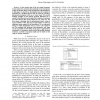62 search results - page 5 / 13 » Homology gives size control in genetic programming |
BMCBI
2010
13 years 7 months ago
2010
Background: Determining a suitable sample size is an important step in the planning of microarray experiments. Increasing the number of arrays gives more statistical power, but ad...
EVOW
2007
Springer
14 years 1 months ago
2007
Springer
We present several practical improvements to the interactive evolution of 2D images, some of which are also applicable to more general genetic programming problems. We introduce tr...
CEC
2010
IEEE
13 years 8 months ago
2010
IEEE
At the current state of the art, genetic programs do not contain two constructs that commonly occur in programs written by humans, that is, loops and functions with parameters. In ...
CEC
2011
IEEE
12 years 7 months ago
2011
IEEE
—Constrained Genetic Programming (CGP) is a method of searching the Genetic Programming search space non-uniformly, giving preferences to certain subspaces according to some heur...
RAS
2010
13 years 6 months ago
2010
Much of the literature shows that Central Pattern Generators (CPGs) are a good approach for generating periodic motions for legged robots. In most of the presented works the numer...

